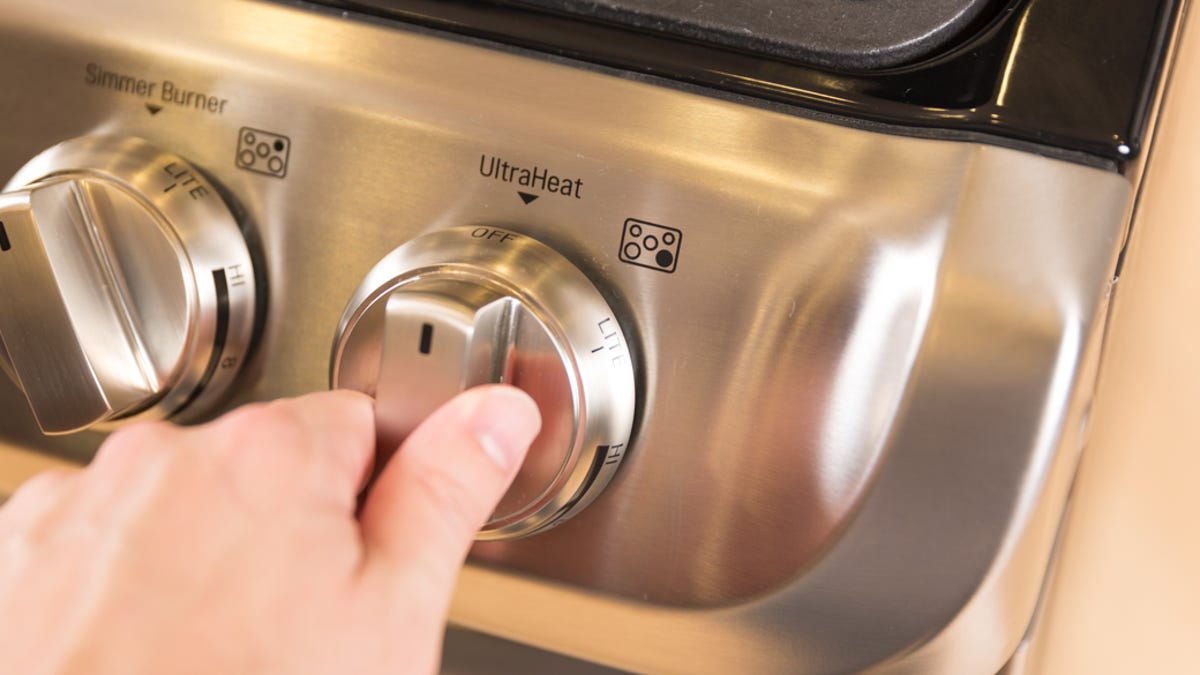Find out if your oven is actually preheating to the right temperatures
If your oven isn't cooking properly, it may not be heating to the set temperature like it should. Use this quick test to check and diagnose you oven.

It's Monday night. You pull a pizza out of the freezer. It calls for preheating the oven to 400˚F (204.44˚C), so you adjust the temperature, wait for the alarm, pop in the pizza and set a timer.
After the timer to goes off, you rip open the oven door to find an undercooked pizza.
Unfortunately, this problem is more common than you might think, and is even more detrimental when dealing with baked goods.
Part of the problem is that years of heating and cooling puts the oven's internal components under a lot of stress, and may wear out or lose accuracy over time.
Learn how to check if your oven is reaching the desired temperature and how to quickly troubleshoot the problem.
How ovens work
What makes ovens so tricky is that they aren't exactly precision appliances. Instead, they operate on approximations and averages.
The oven has a tolerance zone for the desired temperature you set. When the internal temperature hits the lower threshold, the heating element will kick on until the temperature reaches the upper threshold, causing the heating element to switch off. This forces the temperature to oscillate back and forth. The goal is to have an average temperature of approximately what you initially set.
Cook's Illustrated Magazine tested oven temperatures and found that while set to the same temperature, the internal temperature of different ovens can vary by as much as 90 degrees Fahrenheit (32.22 degrees Celsius).
How to test your oven's temperature accuracy
One or two undercooked meals doesn't necessarily mean your oven is malfunctioning, but it's certainly cause for concern.
A sure-shot way to rule out the oven as the problem is to put it to the test. All you will need is an oven thermometer. You can purchase highly recommended models for as little as $6. To test the oven:
- Hang an oven thermometer in the center of the middle rack and preheat the oven to 350˚F (176.67˚C).
- Allow the oven to preheat for at least 20 minutes and take a temperature reading. This will tell you if the oven is even reaching the desired temperature from the beginning.
- To test if the oven is properly calibrated and maintaining its heat, continue to take readings every 20 minutes for the next hour and a half to two hours.
- Divide the sum of the readings by the number of readings you have taken. The average should be around the original set temperature.
How to adjust your oven's temperature dial
If you determine the average temperature is not correct, diagnosing the exact cause of the problem can be time-consuming.
Often, the oven temperature dial simply needs to be adjusted to match the internal temperature of the oven.
- First, ensure the internal thermostat sensor on the inside of the oven is secure and not touching the inner walls.
- Next, place the oven thermometer in the center of the middle rack. Set the oven to 350˚F (176.67˚C) and let the oven heat for at least 20 minutes. Take a reading of the internal temperature and a reading every 20 minutes for the following hour and a half. Calculate the average of the readings.
- Next, remove the plastic knob from the temperature dial. It should pull off without tools. If you have trouble removing it, slide a screwdriver behind the knob and gently pry to remove it.
- Mark where the alignment flat spot (or slot) on the back of the knob is with a marker so you can reference it or come back to it if something goes awry.
- Next, use a screwdriver to loosen the screws holding the outer part of the dial to the inner mechanism.
- Calculate the difference in the set temperature and the calculated average. If your oven is not reaching the correct temperature, hold the stem and rotate the dial counter-clockwise. If the oven is running too hot, hold the stem and rotate the dial clockwise.
- Tighten the screws and reattach the knob to the dial on the oven.
- Optionally, you can test the adjustments by taking the average temperature of the oven once more and repeat the steps as necessary until the oven is reaching the desired temperature.
If this doesn't fix the issue, the problem could be with a faulty heating element, thermostat sensor, or another component that needs replacing. If this is the case, the temperature is off by more than 100˚F (37.78˚C) or oscillates by more than 20˚F (-6.67˚C) above or below the set temperature, you should consider calling a professional.

